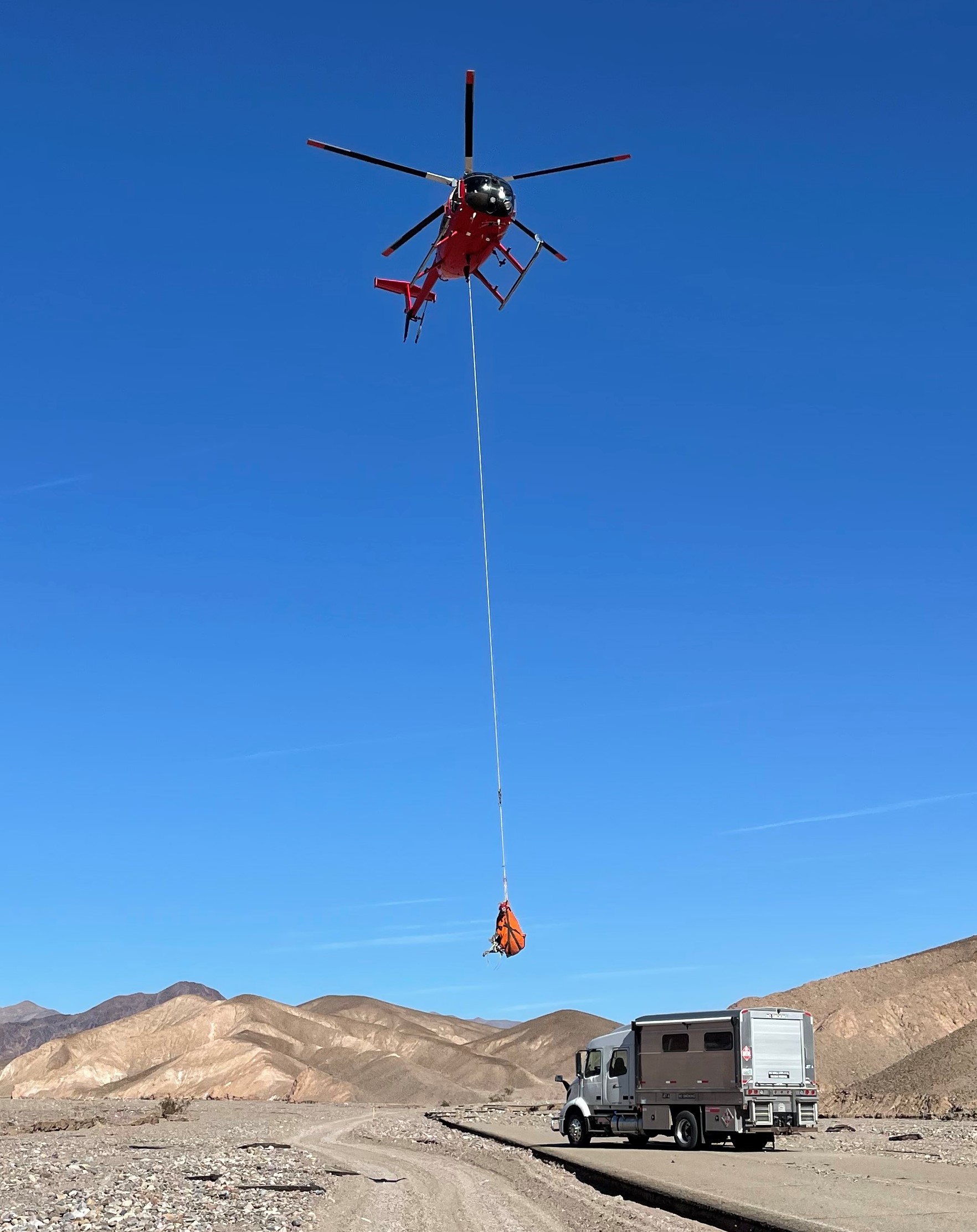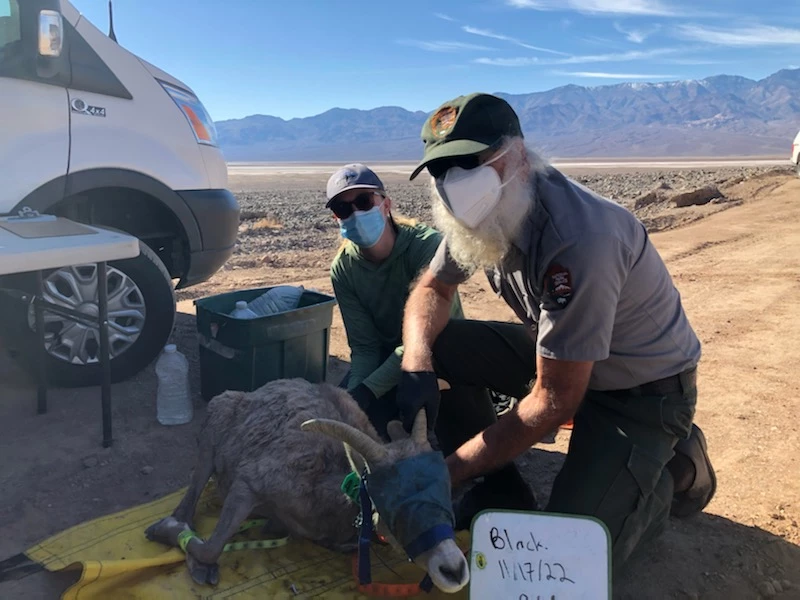News Release
You are viewing ARCHIVED content published online before January 20, 2025.
Please note that this content is NOT UPDATED, and links may not work. For current information,
visit https://www.nps.gov/aboutus/news/index.htm.

NPS/Bill Sloan
|
Subscribe
|
Contact: Abby Wines, 760-786-3221
DEATH VALLEY, Calif. – Researchers are looking at bighorn sheep in Death Valley National Park to study links between movement, genetics, and disease.Diseases pose one the largest threats to the survival of desert bighorn sheep (Ovis canadensis nelsoni). Bighorn sheep were exposed to new diseases when domestic sheep and goats were brought into the West. Some diseases are common and relatively minor in domestic sheep and goats, yet can be deadly for bighorn sheep.
However, some herds respond better to disease than others do. The question is, “Why?”
The answer could be key to protecting bighorn sheep in the West.
While most desert bighorn sheep spend their lifetimes within a single mountain range, some ewes and rams journey between mountain ranges. These wanderers create important genetic diversity, but they can also spread disease between herds.
While some herds interact with many wandering sheep, other herds are more isolated. Researchers at Oregon State University (OSU) think that difference affects how bighorn sheep immune systems evolved. This could explain why some herds are more resistant to certain diseases.
OSU is working with the National Park Service and the California Department of Fish and Wildlife to study this question in Death Valley.
In November and early December, park visitors might have seen bighorn sheep hanging from a helicopter. The helicopter captured and transported 60 sheep to level ground for biologists to be able to safely do their work. Researchers collected genetic, disease, immune, and microbiome samples from each bighorn sheep. They then fitted each sheep with a GPS tracking collar.
These GPS collars will help produce the most accurate picture of the location, movement, and size of desert bighorn herds in Death Valley to date. They will also provide real time monitoring of how bighorn sheep respond to challenges like disease, human activities, and climate change.

California Department of Fish and Wildlife
Last updated: December 20, 2022
